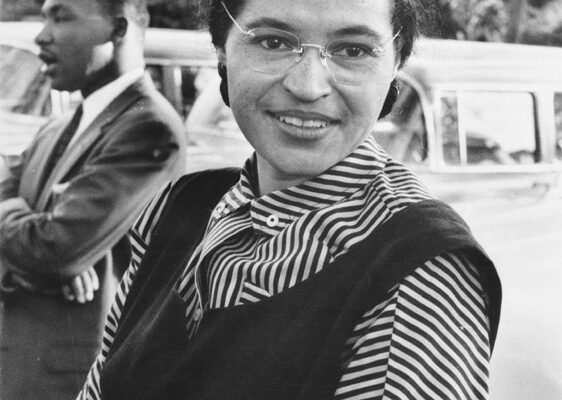By Johanna Kaiser, Communications & Development Associate
"Rosaparks" by Unknown - USIA / National Archives and Records Administration Records of the U.S. Information Agency Record Group 306. Licensed under Public Domain via Wikimedia Commons
On December 1, 1955, Rosa Parks sat down on a city bus, refused to give up her seat to a white man, and made history.
Mrs. Parks act of civil disobedience challenged the laws and customs of Montgomery, Alabama, and, in turn, the entire country. Mrs. Parks’ act of defiance in the Jim Crow South was by no means the first challenge to racial segregation and it was certainly not the last, but we remember it today as a seminal moment of the Civil Rights Movement and the act that sparked the yearlong Montgomery Bus Boycott.
Mrs. Parks, a civil rights activist and secretary of the Montgomery chapter of the NAACP, later said she saw the incident as “an opportunity for me to take a stand.”
Today, we still need to take a stand. Though the overt segregation and racism of 1955 no longer plague us, racial inequalities and discrimination persist. Police shootings of unarmed black men and the subsequent actions and demonstrations, have brought to the forefront the need to address the disparities that plague all areas of public life. Black and Latino children continue to be pushed out of school and into the school-to-prison pipeline. People of color still face racial profiling by law enforcement. The so-called “War on Drugs” continues to disproportionately punish black individuals.
Sixty years later, Mrs. Parks’ brave act serves as a reminder that one person taking a stand—whether it’s through peaceful protest, advocacy, or holding officials accountable—can make a difference.

